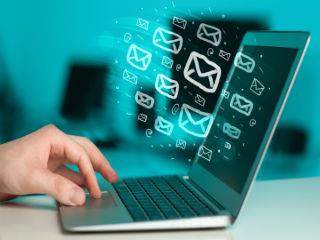Email is integral to the way that many of us work. Yet there is no universally accepted standard for its use, which leaves many of us struggling to find strategies that will help us work effectively without also overstressing or causing email fatigue

It’s clear that our coping strategies are evolving alongside the communications technology we use. And it should remind us that email does not exist in a vacuum: its usefulness at work depends on the individual and the office culture – that’s where organisations should look first for ways to improve communication at work while preventing staff from burning out.
by
Emma Russell*
There is no shortage of self-help books and time management gurus who argue that email zen is possible. But with so much research being conducted in different fields there is a risk that populist volumes and consultants simply cherry-pick the data and findings to fit their point of view – that is, if their recommendations are even evidence-based at all.
This approach examines published data in a rigorous way, and after excluding many papers that didn’t fit our sifting criteria, we settled on assessing 42 papers. From these, we identified a number of themes relating to how email is used today, which were then matched against markers of productivity and well-being.
Finally, these themes were sense-checked in a qualitative study with 12 representative participants.
What did we find? It became apparent that there is no one-size-fits-all set of strategies that improve both people’s productivity and well-being across job roles and industries.
For example, a strategy such as catching up with email outside of work hours might help people feel more in control of their work, but it does not tangibly reduce work overload – and can create conflict in families where work is brought home.
But we were able to identify a number of strategies that research indicates are generally beneficial, and these can be used to dispel many of the popular myths about work email and how we “should” be using it. Here are the top five work email myths – busted by science.
Myth #1: We should check email only a few times a day
It’s not efficient to allow ourselves to be constantly interrupted by email alerts. But this doesn’t mean we should ignore email for prolonged periods. We found that workers who regularly checked and processed their email reported feeling more in control and less overloaded, regardless of the volume of email they received.
Keeping on top of incoming email is important for taming the inbox and keeping email stress at bay.
Myth #2: Email is a time-wasting distraction from real work
Our research found that today only a tiny proportion of email sent and received at work is not work-critical. People use email as an essential tool in getting work tasks done efficiently, and most workers report that they would not be able to get their jobs done as effectively without it.
Myth #3: Restricting email outside work hours will reduce stress
We follow this area with interest, since new employment law in France coming into effect January 1, 2017, gives workers the “right to disconnect” after working a certain number of hours per day. In our research, we found no significant evidence that workers particularly want this, and instead reports are that workers like the flexibility that email can afford.
But it is considered poor etiquette to send an email that arrives outside of work hours. Functionality, such as delayed sending, allows staff to continue to process email out-of-hours without affecting those who want to switch off.
Myth #4: We should set clear email response times
When organisations set a policy that requires a response within a particular time frame, this is considered important for satisfying the customer. This may be undoubtedly necessary in some jobs, such as those that are particularly customer service-focused.
But use of response times in other industries can create an unnecessary pressure to respond that causes high levels of strain for workers, and promotes a reactive rather than strategic approach.
Many of those sending email report that they neither expect nor require a quick response, so the pressure to respond quickly may be ill-founded as well as counterproductive. Organisations may do well to revisit such policies and possibly remove them.
Myth #5: Using ‘CC’ and ‘reply-to-all’ are unnecessary and irritating
Where there is a blame culture then “CC” tends to have a negative reputation, seen as a way workers may use email to cover their backs, hold others accountable, or engage in boasting, broadcasting or presenteeism.
Where there are good work relationships among email partners, however, then “CC” is viewed positively, as helping workers share knowledge, keeping colleagues involved, and including colleagues regardless of their status.
Newer tools like Slack, Yammer and team inboxes were mentioned in our research. These were found especially useful by allowing workers to coordinate digital activities and communications, particularly on team projects where messages could be shared and discussions and threads could be picked up and linked to project documents.
For shift and part-time workers, team-based systems can prevent the build-up of messages during non-work hours because other team members will pick these up in another’s absence.
So what can we conclude from this study? It’s clear that our coping strategies are evolving alongside the communications technology we use. And it should remind us that email does not exist in a vacuum: its usefulness at work depends on the individual and the office culture – that’s where organisations should look first for ways to improve communication at work while preventing staff from burning out.
*Senior Lecturer in Occupational Psychology Management, Kingston University




 By: N. Peter Kramer
By: N. Peter Kramer
